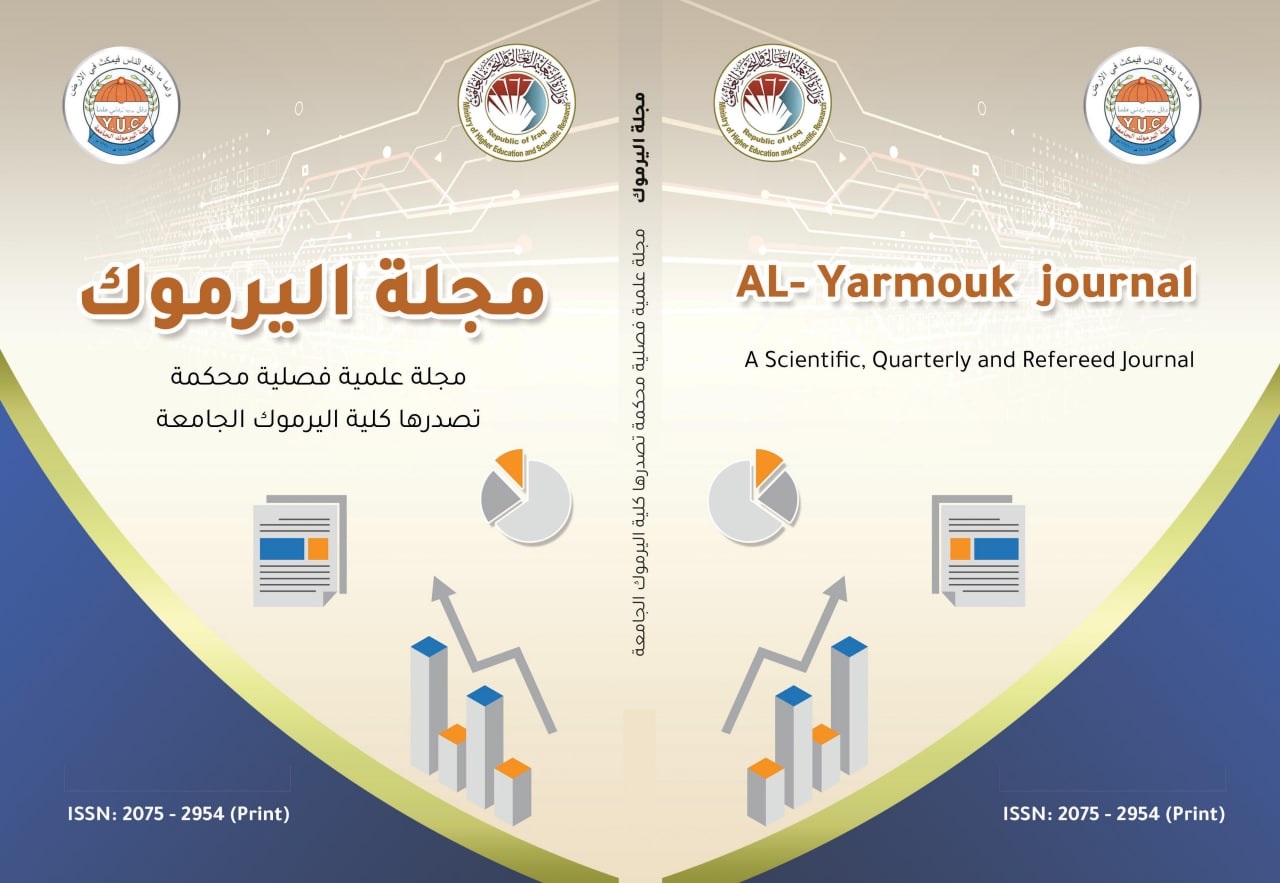The association between Oxidized low - density lipoprotein and high sensitivity C reactive protein in acute coronary syndromes patients
Keywords:
متلازمات الشريان التاجي الحادة,المؤكسد-LDL,HS-برو تين سي التفاعلي, acute coronary syndromes,Oxidized-LDL,hs-C-reactive proteinAbstract
Background: Acute Coronary Syndromes
(ACS) represents a pathological, diagnostic,
and risk continuum from unstable angina
through myocardial infarction (MI) with or
without ST-segment elevation. These three
conditions share a very similar pathology,
although treatment differs. Elevated markers
of inflammation, in particular CRP, are
associated with an increased risk of future
cardiovascular events in healthy subjects,
Increased oxidative stress and the
generation of the free oxygen radicals can
result in modification of LDL to oxidized LDL
that could lead to atherosclerotic. Increased
blood levels of oxidized low density
lipoprotein (ox-LDL) could play a role in
these circumstances.
Objective: The aim of this study
was To measure circulating levels of
oxidized-low-density lipoproteins (ox-LDL) in
patients with AMI (Q-MI &Non-Q-MI),
unstable angina and controls, and to
investigate their correlation with hs-CRP in
acute coronary syndromes.
Patients and Methods: Ninty (90) cardiac
patients were admitted to the coronary
care unit, Ibn alnafees Hospital and Al
kindy Hospital over the period July 2013
and March 2014 with the clinical diagnosis
of acute coronary syndrome their ages
range was (25-84) years, healthy control
(age,sex,matched) were enrolled in this
study. All cardiac patients have routine
ECG,cardiac biomarkers measurements
especially Troponine I, (CKMB),serelogical markers (hs-C-RP) and
Ox-LDL.10 ml of blood needed for
assessment of the above makers.
Results: : Ox-LDL and hs-CRP in
Patients with Acute Coronary Syndromes
(ACS) 90 were found significantly high in
patients with ACS as compared to healthy
subjects, and also a significant positive
correlation was observed between Ox-LDL
& hs-CRP in Q-MI but positive related in
UA & Non-Q-MI .
Conclusion: OxLDLand hs-CRP levels
are higher in ACS patients, and a
significant positive correlation was
observed between Ox-LDL & hs-CRP in QMI,Ox-LDL and hs-CRP might be markers
of destabilization of ACS
الخلفية: المتلازمات التاجية الحادة للقلب (ACS) تمثل سلسلة خطر مرضي تشخيصي متصل من الذبحة الصدرية غير المستقرة من خلال احتشاء عضلة القلب (MI) مع أو بدون ارتفاعT شريحةST-. وتشترك تلك الحالات الثلاثة بنفش الصورة المرضية برغم اختلاف العلاج. المؤشرلت الالتهابية المرتفعة , ولا سيما بروتين سي التفاعلي, ترتبط مع زيادة خطر الحوادث القلبية الوعائية في المستقبل في الاصحاء. زيادة الاكسدة وتوليد الجذور الحرة للأكسجين يمكن أن يؤدي إلى تحول LDL إلى LDL المؤكسد التي يمكن أن تؤدي إلى تصلب الشرايين. زيادة مستويات الدم من البروتين الدهني منخفض الكثافة المؤكسد(oxLDL) يمكن أن تلعب دورا في هذه الظروفالهدف: الهدف من هذه الدراسة قياس مستويات الدم للبروتينات الدهنية المتاكسدة منخفض الكثافة (ox-LDL) في المرضى الذين يعانون من احتشاء القلب (AMI (Q-MI وبدون( Q-MI)، والذبحة الصدرية غير المستقرة والضوابط، والتحقيق في العلاقة مع hs- CRP في متلازمة الشريان التاجي الحادة.المرضى والطرق: احبل تسعون (90) من مرضى القلب إلى وحدة العناية التاجية في ابن النفيس ومستشفى الكندي خلال الفترة من يوليو عام 2013 ومارس 2014 بعد التشخيص السريري لمتلازمة الشريان التاجي الحادة كانت اعمارهم تتراوح بين (25-84) سنة، و ضوابط صحية متطابقين (العمر، الجنس) التحق في هذه الدراسة. جميع مرضى القلب لديهم تخطيط القلب، المؤشرات الحيوية للقياسات القلبية خصوصا Troponine -I ، (CK-MB)، وقياسات مصلية (HS-C-RP و LDL-ox . 10مل من الدم تطلب لتقييم القياسات أعلاه.النتائج: كل من ox-LDL و HS-CRP في المرضى الذين يعانون من متلازمات التاجية الحادة (ACS) تم العثور على 90 ارتفاع كبير في المرضى الذين يعانون من ACS بالمقارنة مع الاشخاص الاصحاء، وكذلك هناك علاقة ايجابية ذات قيمة احصائية لوحظت بين البروتينات الدهنية المتاكسدة منخفض الكثافة (ox-LDL) و البروتين سي التفاعلي عالي الحساسية في مرضى احتشاء القلب (Q- MI)لكن علاقة ايجابية فقط في الذبحة الغير مستقرة و احتشاء القلب بدون Q- Segmentالاستنتاج: مستويات LDL-ox and HS-CRP أعلى في المرضى ACS، ولوحظ وجود علاقة إيجابية ذات دلالة إحصائية بين LDL-ox و HS-CRP في Q-MI، ox-LDL و HS-CRP قد تكون علامات لزعزعة استقرار ACS.





